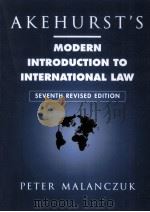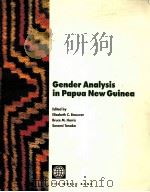《AKEHURST%MODERN INTRODUCTION TO INTERNATIONAL LAW SEVENTH REVISED EDITION》
| 作者 | PETER MALANCZUK 编者 |
|---|---|
| 出版 | ROUTLEDGE |
| 参考页数 | 449 |
| 出版时间 | 1997(求助前请核对) 目录预览 |
| ISBN号 | 041511120X — 求助条款 |
| PDF编号 | 813666398(仅供预览,未存储实际文件) |
| 求助格式 | 扫描PDF(若分多册发行,每次仅能受理1册) |

1 Introduction1
The problem of defining international law1
General and regional international law2
Characteristics of international law3
International law as ‘law’5
The scope of international law7
2 History and theory9
The formation of European international law10
Features of European international law in state practice after 164811
Colonization and the relation to non-European powers12
The Western hemisphere14
Theory: naturalists and positivists15
The theory of sovereignty17
Legal results of the period up to the First World War18
The unlimited right to use force19
The peaceful settlement of disputes20
Prohibition of the slave trade21
Humanization of the law of warfare21
First forms of international organizations22
The Hague Peace Conferences of 1899 and 190722
The watershed after the First World War23
The League of Nations23
The attempt to restrict the use of force24
Other functions of the League24
The Permanent Court of Justice24
Failure of the League system25
Development after the Second World War26
The prohibition of the use of force and collective security in the United Nations Charter26
Decolonization and change in the composition of the international community28
Attitudes of Third World states towards international law28
Universality and the challenge to the unity of international law30
New developments in theory32
3 Sources of international law35
Treaties36
Law-making treaties and ‘contract treaties’37
Parties to international treaties and ‘internationalized contracts’38
Custom39
Where to look for evidence of customary law39
The problem of repetition41
What states say and what states do43
The psychological element in the formation of customary law (opinio iuris)44
‘Instant’ customary law45
Universality and the consensual theory of international law46
General principles of law48
Judicial decisions51
Learned writers51
Other possible sources of international law52
Acts of international organizations52
‘Soft’ law54
Equity55
The hierarchy of the sources56
Ius cogens57
Obligations erga omnes and ‘international crimes’58
Codification of international law60
4 International law and municipal law63
Dualist and monist theories63
The attitude of international law to municipal law64
The attitude of national legal systems to international law65
Treaties65
Custom and general principles68
Conclusions71
Public international law and private international law71
5States and governments75
States75
Defined territory75
Population76
Effective control by a government77
Capacity to enter into relations with other states79
Self-determination and recognition as additional criteria80
Federal states81
Governments81
Recognition of states and governments in international law82
Recognition of states82
Legal effects of recognition in international law83
Legal effects in domestic law86
Recognition of governments86
De jure and de facto recognition88
6International organizations, individuals, companies and groups91
International organizations92
Non-governmental organizations (NGOs)96
Individuals and companies100
Insurgents and national liberation movements104
Ethnic minorities and indigenous peoples105
Minorities105
Indigenous peoples106
7 Jurisdiction109
Forms of jurisdiction109
Criminal jurisdiction of national courts110
Territorial principle110
Nationality principle111
Protective principle111
Universality principle112
Universal jurisdiction of national courts over crimes against human rights113
‘Ivan the Terrible’ - The trial of John Demjanuk115
Conflicts of jurisdiction116
Extradition117
8Immunity from jurisdiction118
Sovereign (or state) immunity118
The act of state doctrine121
Diplomatic immunity123
Immunity from the jurisdiction of courts125
Other privileges and immunities126
Consular immunity127
Immunities of international organizations127
Waiver of immunity128
9 Treaties130
Conclusion and entry into force of treaties131
Adoption of the text of a treaty131
Consent to be bound by a treaty131
Entry into force134
Reservations135
Registration136
Application of treaties137
Territorial scope of treaties137
Treaties and third states137
Application of successive treaties relating to the same subject matter137
Invalid treaties137
Provisions of municipal law regarding competence to conclude treaties138
Treaties entered into by persons not authorized to represent a state138
Specific restrictions on authority to express the consent of a state139
Coercion of a representative of a state139
Coercion of a state by the threat or use of force139
Other causes of invalidity140
The consequences of invalidity140
Termination of treaties141
Termination in accordance with the provisions of a treaty141
Termination by consent of the parties141
Implied right of denunciation or withdrawal142
Termination or suspension of a treaty as a consequence of its breach (discharge through breach)142
Supervening impossibility of performance144
Fundamental change of circumstances (rebus sic stantibus)144
Emergence of a new peremptory norm (ius cogens)145
Outbreak of war145
Consequences of termination or suspension146
10 Acquisition of territory147
Modes of acquisition of territory147
Cession148
Occupation148
Prescription150
Operations of nature151
Adjudication151
Conquest151
Acquiescence, recognition and estoppel154
Intertemporal law155
Legal and political arguments157
Minor rights over territory158
Servitudes158
11Legal consequences of changes of sovereignty over territory (state succession)161
Treaties162
Treaties dealing with rights over territory162
Other types of treaties163
The principle of ‘moving treaty boundaries’163
Decolonization and new states164
Recent practice165
Secession165
Baltic states165
Dismemberment166
Soviet Union166
Yugoslavia167
Czechoslovakia167
Unification167
Germany167
Yemen168
International claims169
Nationality169
Public property169
Private propertv170
Contractual rights170
12 The law of the sea173
Internal waters175
Territorial sea176
The right of innocent passage176
Rights of the coastal state over the territorial sea177
The width of the territorial sea178
The line from which the territorial sea is measured180
The contiguous zone182
Exclusive fishery zones and exclusive economic zones183
The high seas184
Interference with ships on the high seas186
Jurisdiction of municipal courts over crimes committed on the high seas190
The continental shelf191
The deep seabed193
Maritime boundaries195
13 Air space and outer space198
Air space198
Outer space201
The ‘common heritage of mankind’ principle207
14 Human rights209
The concept of human rights209
Human rights on the universal level211
The United Nations Charter211
The Universal Declaration of Human Rights212
United Nations bodies active in the field of human rights213
The 1966 Covenants215
Other human rights instruments on the universal level216
Human rights on the regional level217
The European Convention for the Protection of Human Rights and Fundamental Freedoms217
Other regional instruments219
Human rights as a matter of international concern220
15 Economy222
The Bretton Woods system and international economic organizations223
The International Monetary Fund (IMF)225
The World Bank227
The GATT228
The new World Trade Organization231
The trade agreements on goods231
The Agreement on Services (GATS)232
The Agreement on Intellectual Property Rights (TRIPS)232
Institutional aspects233
Developing countries and the legal quest for a New International Economic Order233
Expropriation and standard of compensation235
Disguised expropriation238
Expropriation of contractual rights238
The right to development239
16 Environment241
The scope and nature of international environmental law242
Customary law and general principles245
The United Nations Conference on Environment and Development247
The Convention on Climate Change248
The Biodiversity Convention249
The Rio Declaration and Agenda 21250
Conclusions251
17 State responsibility254
The work of the International Law Commission254
State responsibility and the treatment of aliens256
‘Imputability’257
The minimum international standard260
Preliminary objections262
Nationality of claims263
Exhaustion of local remedies267
Waiver268
Unreasonable delay and improper behaviour by the injured alien269
Consequences of an internationally wrongful act269
Countermeasures and dispute settlement271
18 Peaceful settlement of disputes between states273
Diplomatic methods of dispute settlement275
Negotiations275
Good offices and mediation275
Fact-finding and inquiry277
Conciliation278
Legal methods of dispute settlement281
Adjudication281
The International Court of Justice281
Composition282
Jurisdiction in contentious cases282
Procedure287
Ad hoc chambers288
Enforcement of judgments288
Advisory opinions289
Evaluation of the Court290
Arbitration293
ICSID295
The Iran-United States Claims Tribunal296
Settlement of disputes under the Law of the Sea Convention298
Conclusions300
19 Internatlonal wars, civil wars and the right to self-determination:ids ad bellum306
Lawful and unlawful wars: developments before 1945306
The prohibition of the use of force in the United Nations Charter309
Self-defence311
Preventive self-defence311
Self-defence and claims to territory314
Self-defence against attacks on ships and aircraft315
Armed protection of nationals abroad315
Armed reprisals316
Immediacy and proportionality316
Collective self-defence317
Civil wars318
The legality of civil wars318
Participation by other states: help for the insurgents319
Participation by other states: help for the established authorities322
The theory that help for the established authorities is legal322
The theory that help for the established authorities is illegal323
Collective self-defence against subversion324
Conclusion325
Self-determination and the use of force326
Mandated territories, trust territories and non-self-governing territories327
Mandated territories327
Trust territories328
South West Africa (Namibia)328
Non-self-governing territories329
Double standards?332
Consequences of violations of the right of self-determination334
Creation of new states334
Title to territory334
Wars of national liberation336
New developments338
The effectiveness of the modern rules against the use of force341
20 Means of waging war and criminal responsibility: ius in bello342
Lawful and unlawful means of waging war342
Nuclear weapons346
The law of neutrality and economic uses of maritime warfare350
Reprisals351
Rules governing the conduct of civil wars352
War crimes trials353
The International Criminal Tribunal for the Former Yugoslavia355
Jurisdiction of the Tribunal356
The work of the Tribunal358
The Rwanda Tribunal360
Towards a permanent international criminal court?360
Possible future developments361
21 The Charter and the organs of the United Nations364
The United Nations Charter and the problem of interpretation364
Literal interpretation365
Intention and travaux preparatoires366
Practice366
Effectiveness and implied powers367
The purposes of the United Nations368
Domestic jurisdiction368
Membership369
The representation of China371
The case of Yugoslavia372
The organs of the United Nations373
The Security Council373
The General Assembly377
The Secretariat380
The Economic and Social Council and the specialized agencies382
22 The United Nations and peace and security385
Pacific settlement of disputes under the United Nations Charter (Chapter Ⅵ)385
Collective security and enforcement action (Chapter ⅦI)387
Practice under Chapter ⅦI during the Cold War390
The United Nations force in Korea391
The Uniting for Peace Resolution392
Rhodesia and South Africa393
Practice under Chapter ⅦI after the end of the Cold War395
The invasion of Kuwait by Iraq396
The Kurdish crisis399
Somalia402
Rwanda405
Haiti407
Yugoslavia409
UN peacekeeping416
The ‘old’ peacekeeping during the Cold War416
The first United Nations Emergency Force in the Middle East (UNEF)417
The United Nations Force in the Congo (ONUC)418
The Expenses case420
The United Nations Force in Cyprus (UNFICYP)420
New forces in the Middle East422
New forms of peacekeeping after the Cold War423
Conclusion425
Table of cases431
Table of treaties, declarations and other documents435
Index441
1997《AKEHURST%MODERN INTRODUCTION TO INTERNATIONAL LAW SEVENTH REVISED EDITION》由于是年代较久的资料都绝版了,几乎不可能购买到实物。如果大家为了学习确实需要,可向博主求助其电子版PDF文件(由PETER MALANCZUK 1997 ROUTLEDGE 出版的版本) 。对合法合规的求助,我会当即受理并将下载地址发送给你。
高度相关资料
-

- LAW AMONG NATIONS AN INTRODUCTION TO PUBLIC INTERNATIONAL LAW SECOND EDITION
- 1970 THE MACMILLAN COMPANY
-

- AN INTRODUCTION TO POETRY SEVENTH EDITION
- HARPER COLLINS PUBLISHERS
-

- GENDER ANALYSIS IN PAPUA NEW GUINEA
- 1998 THE WORLD BANK
-

- Spycatcher
- 1987 Viking
-

- HOW TO BUY STOCKS SEVENTH REVISED EDITION
- 1983 BANTAM BOOKS
-

- An Introduction To Space Law Second Revised Edition
- 1999 Kluwer Law International
-

- INTRODUCTION TO UNITED STATES INTERNATIONAL TAXATION FOURTH REVISED EDITION
- 1998 KLUWER LAW INTERNATIONAL
-

- INTRODUCTION TO CRIMINAL JUSTICE SEVENTH EDITION
- 1996 WEST PUBLISHING COMPANY
-

- INTRODUCTION TO GERMAN REVISED EDITION
- 1956 THE MACMILLAN COMPANY
-

- THE PRINCIPLES OF INTERNATIONAL LAW SEVENTH EDITION
- 1923 MACMILLAN AND CO.
-

- AN INTRODUCTION TO INTERNATIONAL LAW TENTH EDITION
- 1989 LONDON BUTTERWORTHS
-

- AN INTRODUCTION TO INTERNATIONAL LAW SIXTH EDITION
- 1967 LONDON BUTTERWORTHS
-

- INTRODUCTION TO INTERNATIONAL LAW NINTH EDITION
- 1984 LONDON BUTTERWORTHS
-

- LAW AMONG NATIONS AN INTRODUCTION TO PUBLIC INTERNATIONAL LAW FOURTH EDITION
- 1981 MACMILLAN PUBLISHING CO.
提示:百度云已更名为百度网盘(百度盘),天翼云盘、微盘下载地址……暂未提供。➥ PDF文字可复制化或转WORD
